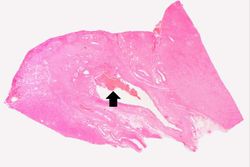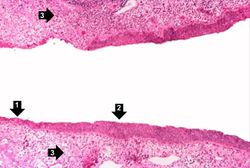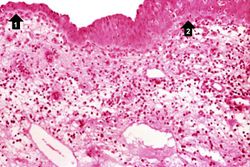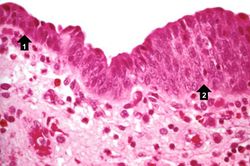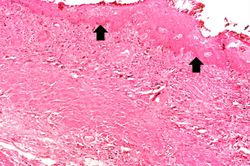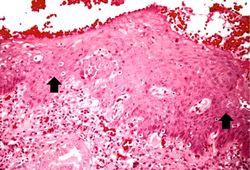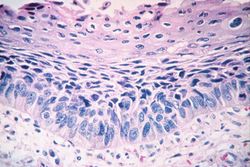Difference between revisions of "IPLab:Lab 2:Metaplasia"
(Created page with "== Images == <gallery heights="250px" widths="250px"> File:IPLab2Metaplasia1.jpg|This is a low-power photomicrograph showing the full cortical and medullary thickness of the k...") |
(No difference)
|
Revision as of 15:46, 19 August 2013
Images
This is a low-power photomicrograph showing the full cortical and medullary thickness of the kidney. Note that there is a dilated calyx containing some red blood cells in the center of the section (arrow). The cortex is markedly thin and has severe lesions of degeneration and atrophy, although these are hard to appreciate at this low magnification.
his high-power photomicrograph demonstrates the transitional epithelium lining the renal calyx (1) and the junction (transition zone) to a thicker hyperplastic epithelium (2). Note the inflammatory cells and increased vascular response in the stromal tissue (3) lying beneath the normal transitional epithelium.
In areas adjacent to the normal transitional epithelium, there are areas of epithelium (arrows) where the epithelial cells have the character of normal squamous epithelium as found in the dermis. However, squamous epithelium is not normal in the renal pelvis. This adaptive change is referred to as squamous metaplasia.
| |||||
